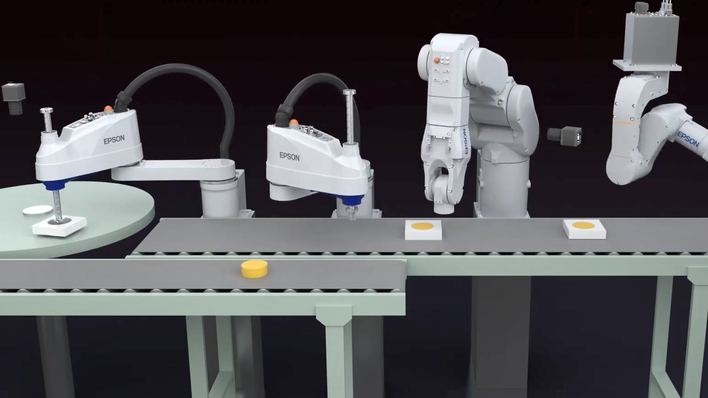Warehouse managers: if you don’t think you need a little color in your life, think again. Black and white labeling systems have had their day. Modern one-step color labeling solutions can help drive speed, cost savings, and efficiency into your operations, pick pack, and shipping processes.
Busy warehouses face a range of challenges. They must deal with high shipment volumes while keeping costs low, and they must do so while meeting tight delivery deadlines. That means processing every shipment as quickly and cheaply as possible. Efficiency is key.
Accuracy is critical for efficient processing, and not just so that orders reach the right destinations on time. Compliance is often a key factor for warehouses, especially when storing and shipping hazardous items or medical supplies.
This makes errors the enemy of any warehouse. A small mistake such as loading a product on to the wrong pallet could send costs soaring down the line when customers complain about mis-shipments or when receivers return products for reprocessing.
The dangers of poorly printed labels
Shipping labels play an important part in this equation. Most people give them little thought, but a well-printed label with an effective design is pivotal to warehouse efficiency. Warehouses often rely on tired, poor-quality black and white legacy printing technology that can make them vulnerable to errors.
Many warehouses print labels using thermal technology. This can make them harder to read, especially when working with smaller labels. Because thermal prints are heat sensitive, they can darken and smudge from something as simple as human touch or by being exposed to heat and sunlight for a length of time.
Poorly printed labels can increase the risk of human error, with potentially dire ramifications. It increases the potential for lost items, or deliveries sent to the wrong place. That raises the cost of processing an item and can also affect customer satisfaction.
Even if a product makes its way to the correct address, an inadequate bar code or QR code on a label can wreak havoc with commercial relationships. If a receiver cannot scan a code properly, the shipment may be rejected. If that happens too often, it could end up with compliance fines and have a detrimental impact on the customer relationship.
The need for color
That all paints a pretty drab picture, but a little color can make a lot of difference. Color label printers introduce a new dimension for communicating information clearly using easy visual aids.
A warehouse can use simple color indicators on labels to quickly tell staff important information about that package, such as its delivery time window or regional destination. It’s easier for a warehouse worker to know that they must ship a package by the afternoon if it has a red dot, just as it’s easier to tell that you must ship a parcel with a green triangle to the southern region on Tuesday’s truck. This can result in fewer items misdirected or left at the back of a dock by mistake.
Color label printers offer other forms of visual aid too. They make it possible to print product pictures on labels to help further reduce human error. A warehouse worker who sees a label displaying one specialist battery is unlikely to make the mistake of assuming it’s a six-pack.
How warehouse managers support color poorly
Many warehouse managers who argue that they don’t need color label printers are often already handling color manually using pens or stickers in additional processing steps. This scales poorly, can be costly, and can be prone to human error. It’s time-consuming and unnecessary.
Manual marking won’t help companies comply with the Globally Harmonized System of Classification (GHS). This is the UN’s system for classifying chemical products. It’s a way to quickly codify safety guidance for hazardous materials, but it also comes with complex color symbols that make labeling requirements far more complex.
Some companies opt for a two-stage printing process to comply with complex labeling requirements like the GHS. They source static pre-printed color labels from a supplier with the regulated marks and then print their own variable data on them in black.
Warehouses typically need multiple labels for different color and symbol combinations, which increases the number of stockpiled pre-printed color labels that they must carry. That can create time-consuming and costly label inventory challenges and introduce potential errors when picking pre-printed labels.
Erroneous label choice isn’t the only danger facing users of pre-printed labels. Another is imperfect positioning when printing black over color. Hazardous materials labeling regulations have strict rules about positioning information on labels, and printing errors that obscure information can violate those requirements.
These were some of the problems facing technical product distributor ScanSource. The company needed to comply with hazardous material standards when labeling its products. Color labels helped the company simplify an operation that passes 4200 orders per day. The company used Epson’s ColorWorks label printers to produce its own labels in-house, on demand.
How to revolutionize your printing process with ColorWorks
Epson’s ColorWorks line of color label printers has revolutionized many customers’ warehouse operations with some key advantages:
- Quality: Long-lasting printheads produce crisp, high-quality color and black labels with images, barcodes, and text.
- Compliance: One-stage printing eliminates the black and color misalignments sometimes found in two-step solutions, helping warehouses meet compliance rules.
- Efficiency: A one-stage process simplifies label inventory and helps mitigate errors for cost efficiency.
- Workflow integration: ColorWorks easily integrates with major label management software to create seamless workflows.
- Easy installation: Epson ColorWorks supports the common ZPL printer language, making it an easy fit for legacy environments and minimizing the setup overhead.
Rather than trying to adopt color with cumbersome manual techniques, warehouses that use one-step color printing solutions can integrate it tightly with their workflows. The benefits are soon realized as costs associated with shipment delays and lost customer trust virtually shift to efficiencies resulting in increased potential profitability.
For more information about Epson’s ColorWorks color labeling solution, visit our website at Epson.com/ColorWorks.
![]()



